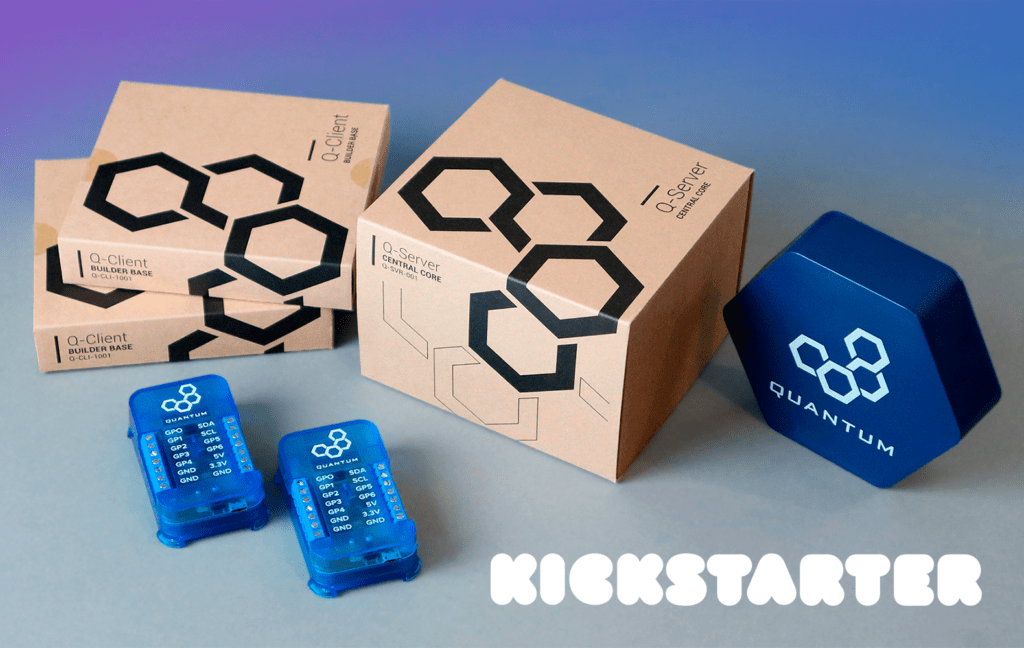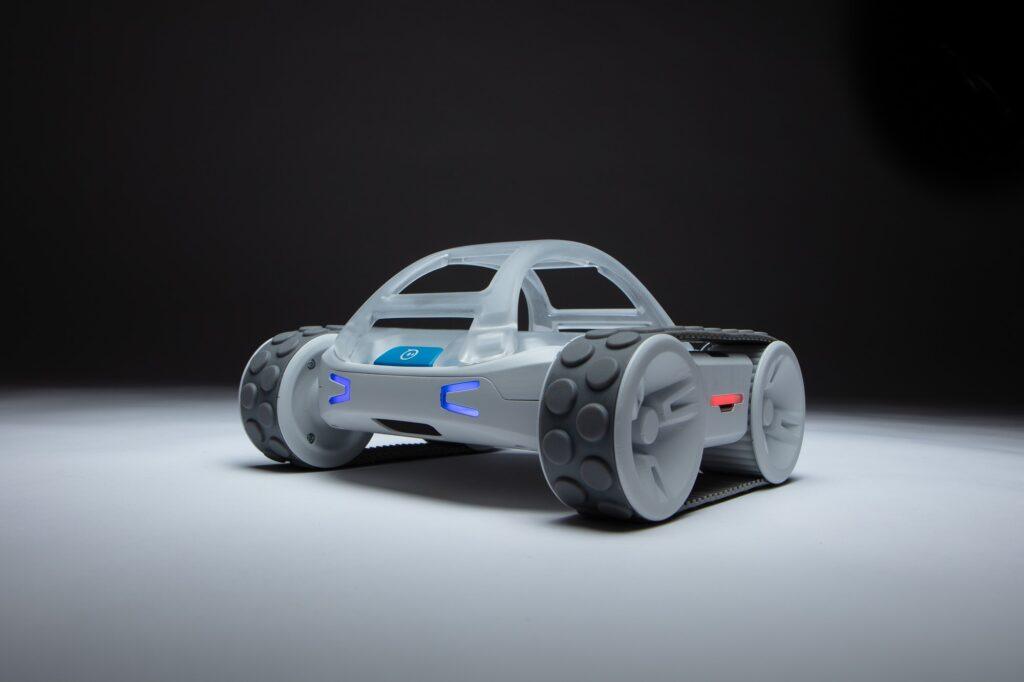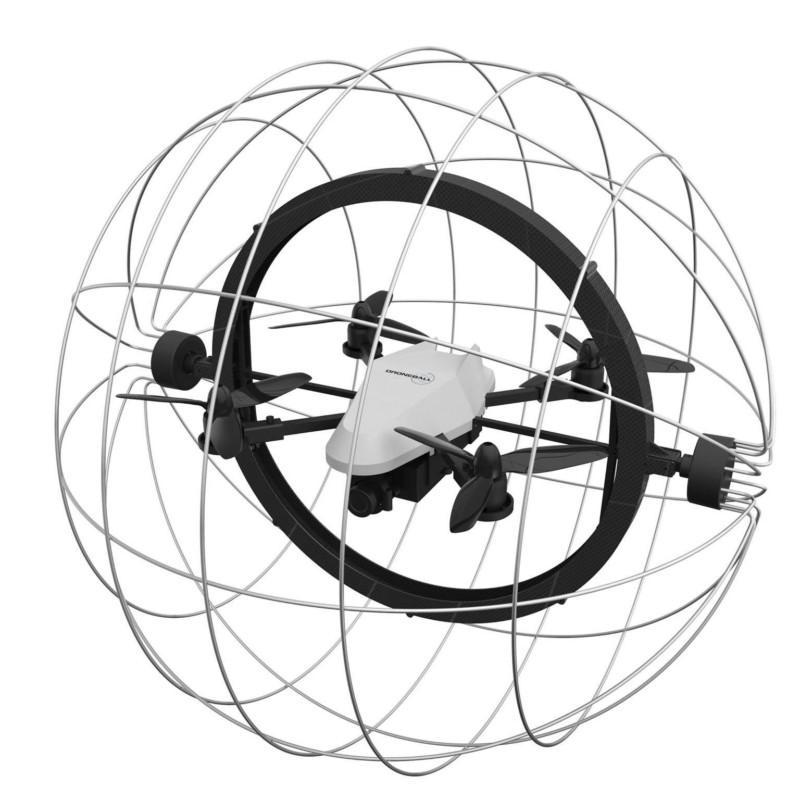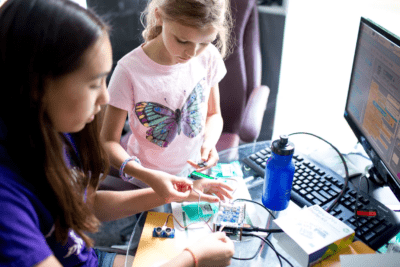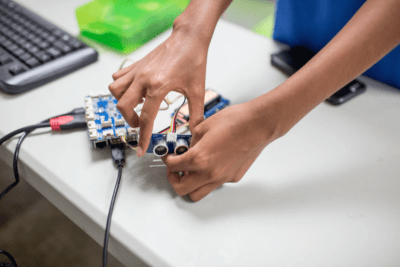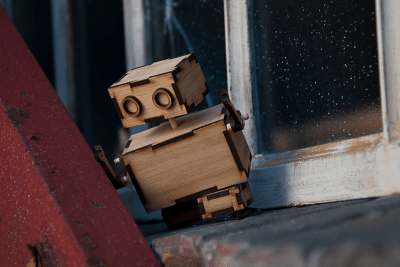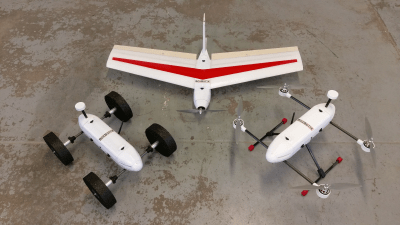Heute ein Gastbeitrag von Roman Kessler, Gründer Make Rhein-Main. Vielen Dank für diesen Beitrag.
Von Roman(ä)make-rhein-main.de
Der InMoov-Androide ist ein Roboter aus dem 3D-Drucker, der aussieht wie ein wissensdurstiger Student. Das Open-Source-Projekt des Franzosen Gael Langevin hat sich schnell weltweit verbreitet. Die Frankfurter Maker-Community will den UrVater des InMoovs und seinen hochentwickelten Androiden jetzt erstmals nach Deutschland holen – und du kannst helfen.
Je nach Version und Ausbaustufe kann der InMoov verschiedene Dinge: Von komplizierten Handbewegungen, bis hin zur Bewegung im Raum und Spracherkennung. Und sogar Dance-Moves! Angefangen hat alles 2012 mit einer Hand. Der französische Designer Gael Langevin beschäftigt sich eigentlich mit Skulpturen, der InMoov ist aber viel mehr eine Vorform von Commander Data.
Insgesamt soll es auf der ganzen Welt schon rund 250 InMoovs geben. Auch im Rhein-Main-Gebiet gibt es einen InMoov, den Studenten von Prof. Neser gedruckt und zusammen gebaut haben. Der kleine darmstädter Bruder des großen Vorbilds aus Paris war bei lokalen bisherigen Maker-Messen www.make-rhein-main.de immer ein großer Hingucker. Jetzt wollen wir den Erfinder Gael zu unserer 5. “Make Rhein-Main” (vom 18.-19. März 2017) nach Frankfurt holen – quasi die deutsche, blauäugige und die französische Version einander vorstellen.
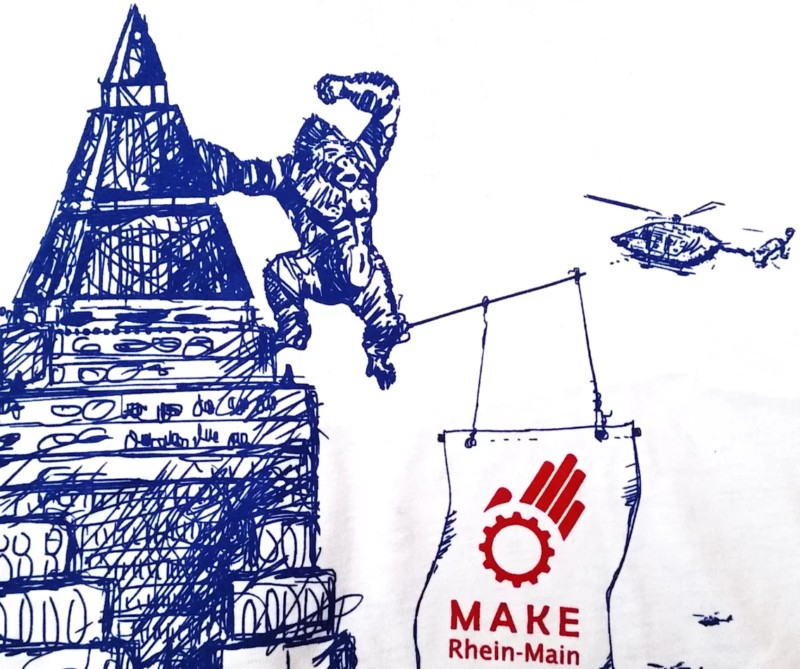
Seit 2014 veranstalten wir rund um Frankfurt die “Make Rhein-Main” in unregelmäßigen Abständen. Wir sind eine unabhängige (!), eigenständige Community, die klein angefangen hat. Bei unserer ersten Messe, waren vielleicht knapp 300 Besucher. Inzwischen ist das Projekt gewachsen und hat eine Eigendynamik entfaltet. Das liegt auch daran, dass wir alle Überschüsse immer wieder in die Messe stecken (ähm,… haben… und nun gerade pleite sind, aber dazu unten mehr).
Nicht nur erreichen wir jetzt weit mehr als 1.000 Besucher – wir waren im Mai 2016 auch zur “European Maker Week” nach Brüssel eingeladen. Klar: Da waren Politiker und Lobbyisten – aber wir haben auch Gael und seinen InMoov getroffen. Uns hat das Ding echt umgehauen, weil es so… ja, menschlich war. Und der InMoov wurde eben nicht von einem japanischen Konzern erschaffen, sondern wird auch in der Open Source-Community ständig verbessert.
Der Plan war schnell gefasst: Der InMoov von Gael aus Paris muss zu uns kommen! Denn bislang war unsere „Make Rhein-Main“ immer eine eher regionale Veranstaltung – eben von und mit den Nerds aus der Nachbarschaft. Die haben Eltern und Kindern erklärt, wie man mit moderner Technik bastelt.
Aber was wäre, wenn wir plötzlich einen solchen internationalen Szene-Star bei uns präsentieren würden? Würde das nicht alle anderen Maker zusätzlich inspirieren und motivieren? Der Gedanke treibt uns an.
Als wir dann endlich wieder eine Zusage für eine Halle hatten (in einer Stadt wie Frankfurt ist die Suche ein Albtraum!!) haben wir Gael dann über Twitter angefragt. Er erinnerte sich sofort an uns und schrieb uns von einem Trip aus Indien, wo er gerade den InMoov vorstellte.
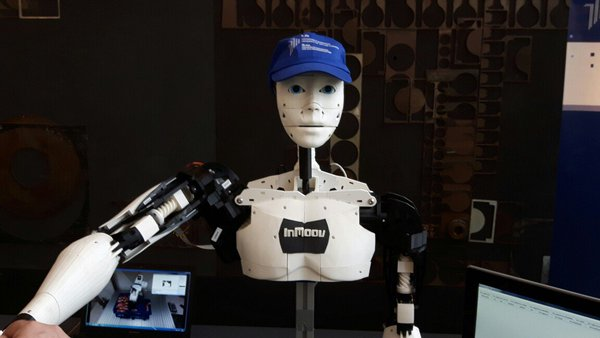
Gael war mit dem InMoov auch schon in aller Herren Ländern. Lustig, ist nur, dass Gael den InMoov noch nie in Deutschland vorgestellt hat. Dabei sind wir doch fast Nachbarn. Wir sind daher extra stolz über die Zusage des InMoov-Erfinders!
Wie kommt der InMoov aus Paris nach Frankfurt?
Allerdings müssen wir natürlich die Reisekosten für Gael, seine Frau und den Bot übernehmen – und zwar VOR der nächsten “Make Rhein-Main”. Das ist nur fair. Nur: Da wir gerade die hohe Kaution für die Hallen bezahlt haben, sind wir mehr oder weniger pleite.
https://www.startnext.com/make-rhein-main-2017
Du kannst uns aber helfen, den großen, tanzenden und sprechenden InMoov zum ersten Mal nach Deutschland zu holen! Noch bis zum 20. Februar 2017 läuft die Crowdfunding-Aktion hierfür auf startnext, damit wir die Reise-Tickets und Unterbringung vor der Messe bezahlen können. Im Kern ist das ein Vorverkauf für die Make-Tickets – aber wir haben auch “Dankeschöns” für alle, die nicht mal eben vorbeikommen können. Zum Beispiel unser Armband oder unser T-Shirt.
Das Crowdfundig soll die unabhängige „Make Rhein-Main“ 2017 zu einer echt europäischen Messe machen. Und den InMoov samt Erfinder und Anhang endlich mal nach Deutschland bringen.
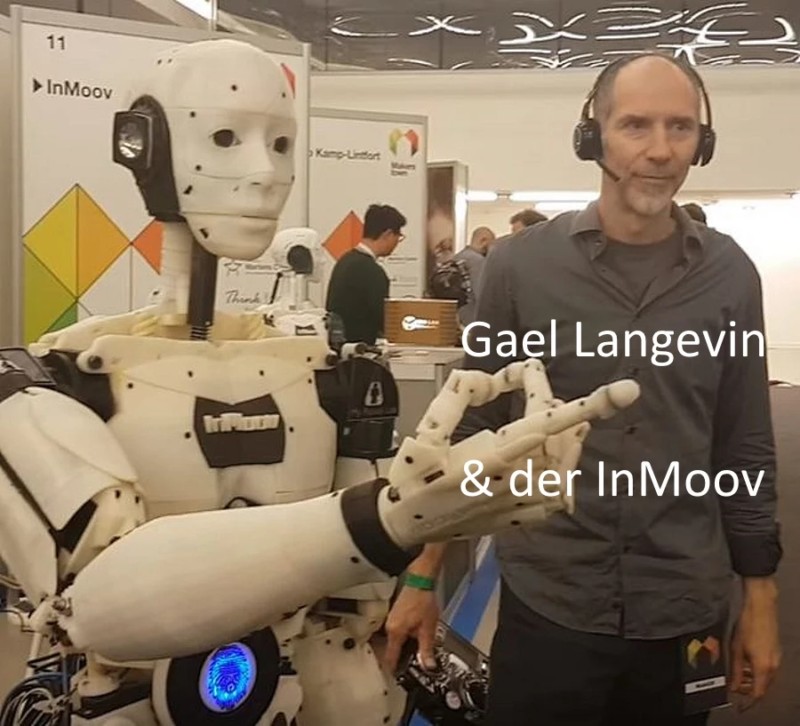
Wenn das Geld reicht, wollen wir versuchen zwei weitere europäische Ausstellern für euch nach Frankfurt zu holen: Paula Pongratz aus Österreich und das Team von Precious Plastic aus den Niederlanden.
Zu Paula Pongratz: Postapokalyptische Schmuck-Workshops für Kinder und Erwachsene
Paula Pongratz aus Österreich bastelt “postapokalyptischen Schmuck.” Also Schönes aus dem, was von unserer Zivilisation übrig bleiben wird: NATO-Draht, Elektronikbauteile, Verschlüsse aus Plastik. Paulas Favorit: die Borsten großer Straßenkehrmaschinen. In ihren Händen werden daraus Ringe, Armbänder, Ohrringe oder Diademe.
In den letzten Jahren war die Kommunikationsdesignerin mit ihren Werken zum Beispiel beim 33C3, dem jährlichen Kongress des Chaos Computer Clubs in Hamburg, und verschiedenen Maker-Messen in halb Europa. Mit ihren Workshops bietet Paula vor allem Kindern die Gelegenheit, selbst mit dem zu basteln, was wir meistens achtlos wegwerfen: “Das kann man doch noch weiter verwenden” ist Paulas Credo.
Zu Precious Plastic: Mit der mobilen Plastikwerkstatt zu einer sauberen Umwelt
Von Precious Plastic haben wir aktuelle noch keine Bestätigung, dass sie kommen, wenn wir die Kosten übernehmen. Aber es sieht ganz gut aus.
Das Projekt des Niederländers Dave Hakkens dreht sich rund um Recycling: Ihn störte der Plastikmüll an Stränden. In den wenigsten Ländern besteht überhaupt ein System, das altes Plastik wieder nutzbar macht. Und so landet der Abfall, den die Natur nicht abbauen kann, im Meer. Eine Möglichkeit, dies zu unterbinden, hat Hakkens mit seinem Projekt “Precious Plastic” gefunden: Aus vier billigen Maschinen zum Selberbauen besteht seine “Plastikwerkstatt”. Sie schreddern das Plastik, schmelzen es ein und bringen es in neue Formen. Der WWF Brasilien fand die Idee großartig, in einer Favela entstand bereits eine mobile Plastikwerkstatt.
Zusammengefasst: Wir die Make Rhein-Main Community, versuchen gerade den InMoov-Androiden zum ersten Mal aus Paris nach Deutschland zu holen. Wenn das Geld reicht, kommen sogar Paula aus Österreich und Precious Plastic. Im Crowdfunding kannst du uns unterstützen, auch wenn du nicht zu unserer nächsten Messe kommen kannst.
Neugierig geworden? Dann unterstütze uns bei startnext und lerne die uns und den InMoov im März persönlich kennen!
https://www.startnext.com/make-rhein-main-2017
